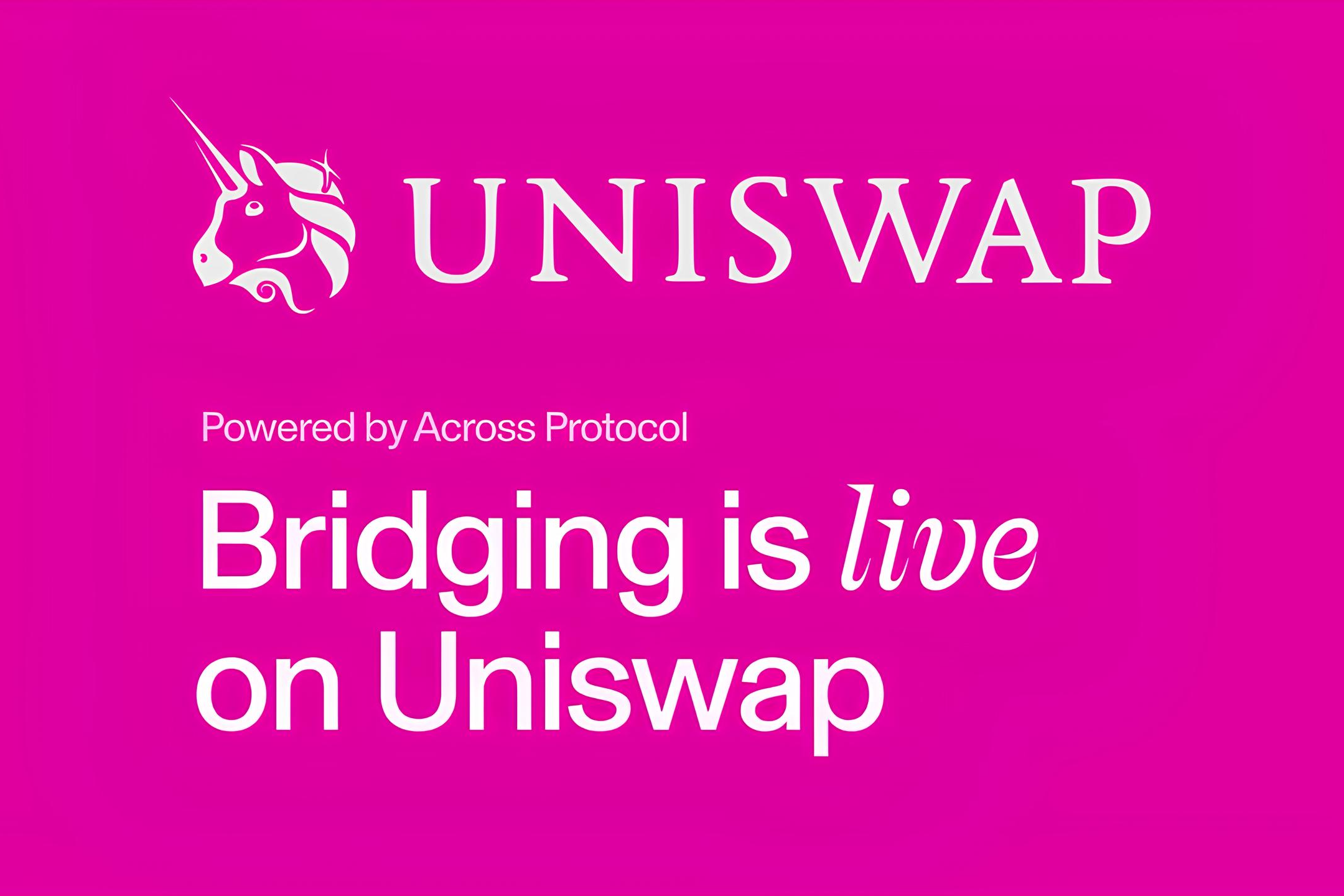2024-10-24

Oct 23, 2024 - Uniswap, a leading
decentralized exchange (DEX) platform, introduced permissionless bridging that
is as simple as swapping across nine networks.
Powered by the Across Protocol, this
new feature allows users to seamlessly transfer assets between blockchains via
the Uniswap interface or wallet.
Initially, the bridging functionality
is available for Ethereum, Base, Arbitrum, Polygon, OP Mainnet, Zora, Blast,
World Chain, and ZKsync, positioning Uniswap to further enhance its utility in
the decentralized finance (DeFi) space.
Addressing the Challenge of Cross-Chain
Transactions
In the past, moving assets between
blockchains has been a complex process for users, often requiring external
bridging services, unfamiliar interfaces, and long waiting times for
transaction confirmations.
Uniswap Labs, the company that
developed the decentralized exchange, explained this pain point in a blog post,
acknowledging the challenges users have faced when dealing with cross-chain
operations.
According to the company,
permissionless bridging via the Uniswap interface is a direct response to these
challenges and a step towards simplifying asset transfers across multiple
blockchains.
The need for improved cross-chain
functionality has grown more urgent as Uniswap’s market share in decentralized
trading has experienced a steady decline in recent months.
Uniswap aims to serve its users who are
increasingly engaging with multiple blockchains.
Powered by Across Protocol
Uniswap’s new bridging feature is
powered by Across Protocol, a permissionless bridging solution that operates
through a decentralized network of liquidity pools and relayers. Across
Protocol stands out from traditional bridges due to its decentralized nature,
which enhances both the speed and security of cross-chain transactions. Unlike
other solutions, where bridging can take several minutes, Across Protocol
allows for transactions to settle in seconds, offering a much-improved user
experience.
The use of Across Protocol not only
ensures fast and secure asset transfers but also aligns with Uniswap’s broader
vision of building a decentralized, multi-chain ecosystem. By utilizing a
permissionless, decentralized protocol, Uniswap users can trust that their
transactions are handled transparently and securely, without the need for
intermediaries or centralized control.
Meeting User Demand
The introduction of permissionless
bridging has been one of the most requested features by Uniswap users. In fact,
a poll conducted by Uniswap Labs on X (formerly Twitter) in July revealed that
bridging was ranked as the top requested feature, surpassing even the demand
for limit orders on Layer 2 networks. With over six million users already
swapping assets on multiple chains, Uniswap’s new bridging capabilities are
expected to significantly enhance the user experience by providing a more
intuitive and efficient way to manage cross-chain transactions.
Instead of navigating third-party
services, users can now complete cross-chain swaps seamlessly within the
Uniswap ecosystem. The support for native assets like ETH on Ethereum and ARB
on Arbitrum, as well as stablecoins, further adds to the convenience of this
new feature.
How to Use Uniswap’s Bridging Feature
To begin using the in-app bridging
feature, users simply need to open the Uniswap interface or wallet, navigate to
the swap modal, and choose the asset they wish to bridge—such as ETH or USDC.
From there, users can select the network they want to bridge to, confirm the transaction, and have their assets moved quickly and securely across chains.

1. Open Uniswap
Interface or Uniswap
Wallet
2. Navigate to the
swap modal
3. Choose the
asset you want to bridge (e.g. ETH or USDC)
4. Navigate to
“Swap across networks” and choose the output network
5. Confirm your
transaction
By prioritizing cross-chain functionality and leveraging decentralized
technologies like Across Protocol, Uniswap is positioning itself as a key
player in the future of decentralized finance, where multi-chain
interoperability will be easy to use.